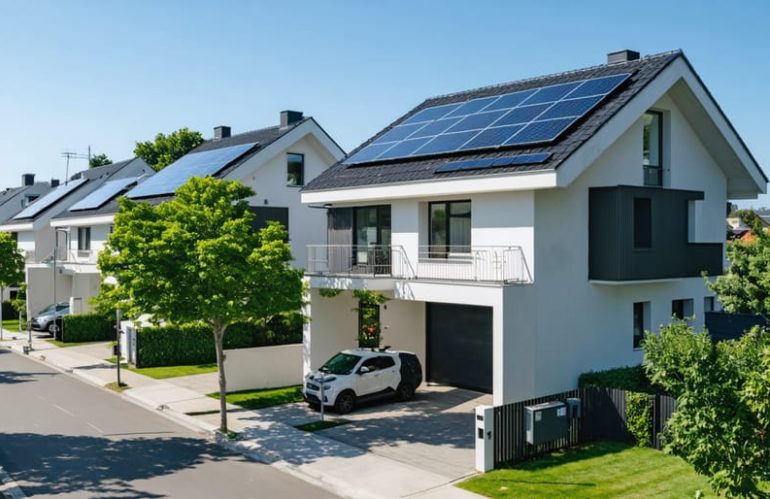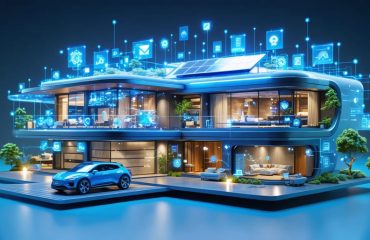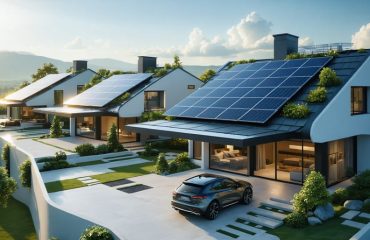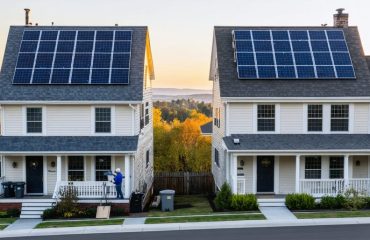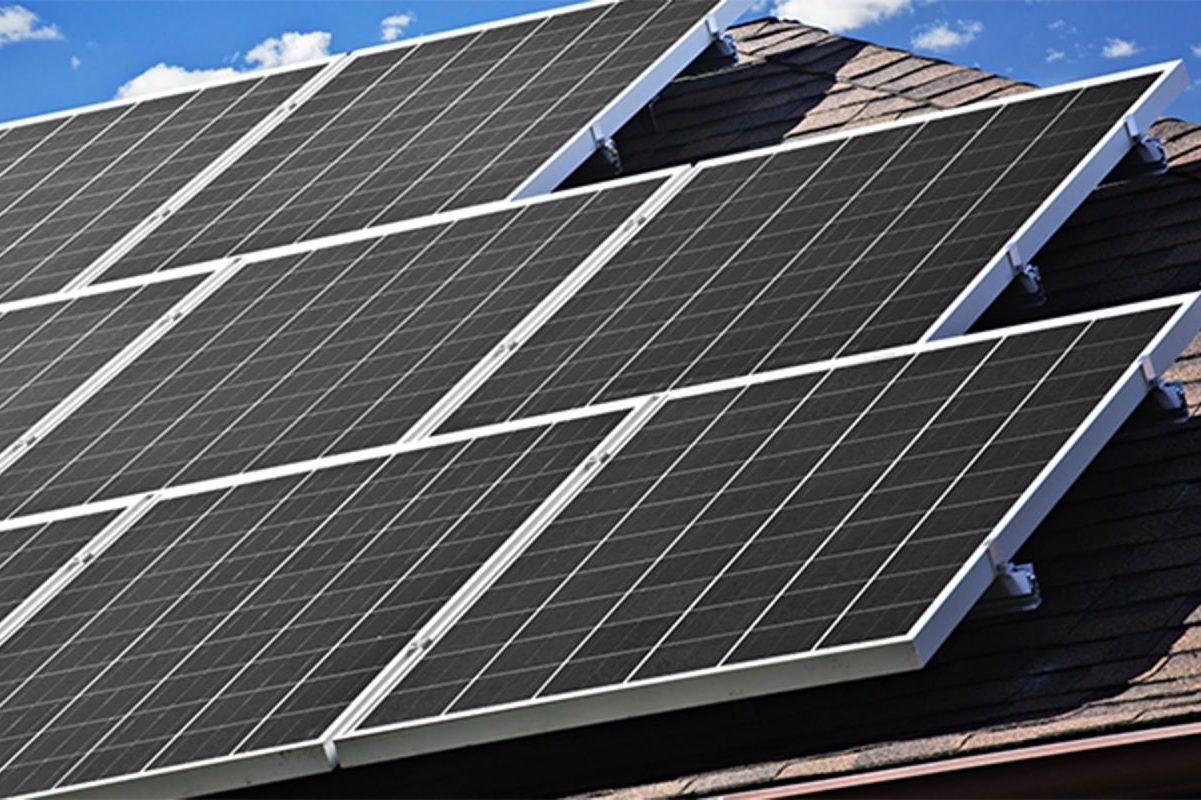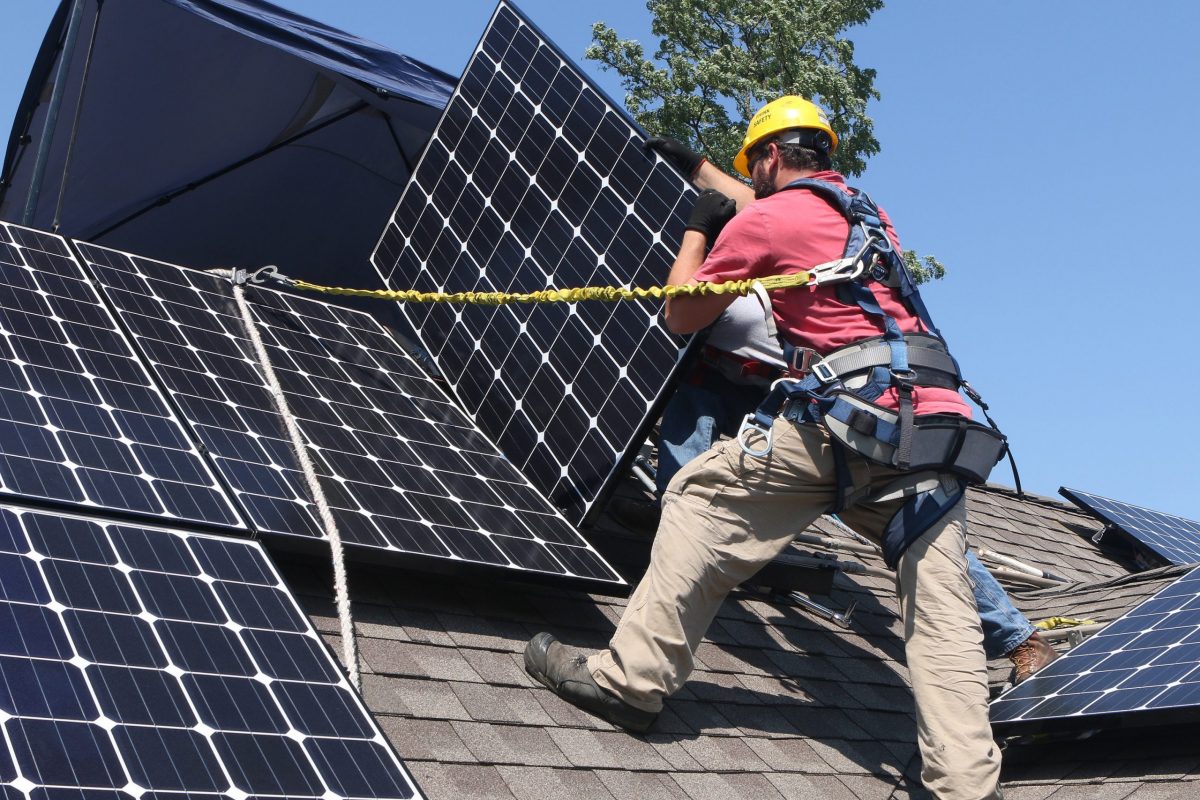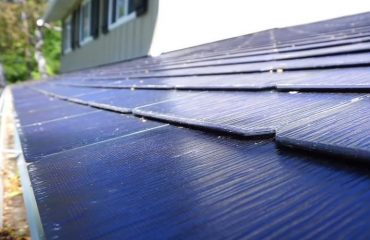Solar microgrids are revolutionizing how homeowners take control of their energy future, combining the power of renewable solar energy with smart distribution networks right at the neighborhood level. These innovative systems enable communities to generate, store, and manage their own electricity supply independently, creating resilient power networks that can operate both connected to and separate from the main electrical grid.
Think of a solar microgrid as your neighborhood’s personal power plant and battery system working together seamlessly. When the sun shines, solar panels capture energy that can either power homes directly or charge battery storage systems for later use. During power outages or peak demand periods, these systems automatically switch to stored power, ensuring your lights stay on when traditional grids fail.
For homeowners, solar microgrids offer a triple benefit: reduced energy costs through sustainable power generation, increased energy independence from utility companies, and enhanced reliability during extreme weather events or grid disruptions. As climate change concerns grow and energy costs continue to rise, these systems represent a practical, forward-thinking solution that puts clean, reliable power directly in the hands of communities.
By combining cutting-edge solar technology with smart energy management systems, solar microgrids are making the dream of sustainable, reliable, and affordable energy a reality for neighborhoods across the country.
How Solar Microgrids Transform Home Energy Systems
Essential Components of a Home Solar Microgrid
A home solar microgrid consists of four key components working together to create your personal energy ecosystem. At its heart are solar panels, which have evolved significantly thanks to advanced solar panel technology, making them more efficient and durable than ever before.
The second essential component is the battery system, which stores excess energy for use during nighttime or cloudy days. Modern solar storage solutions like lithium-ion batteries offer longer lifespans and better performance than traditional options, ensuring reliable power when you need it most.
Inverters serve as the system’s translator, converting DC power from your solar panels and batteries into AC power that your home appliances can use. Many modern inverters include smart features that help you monitor and optimize your energy consumption.
The final piece is the smart controller, often called the brain of your microgrid. This sophisticated device manages power flow between your panels, batteries, and home, making real-time decisions about when to store, use, or sell excess energy back to the grid. It also provides valuable insights through user-friendly apps, helping you maximize your energy independence while minimizing costs.
Together, these components create a reliable, efficient system that puts you in control of your home’s energy future.
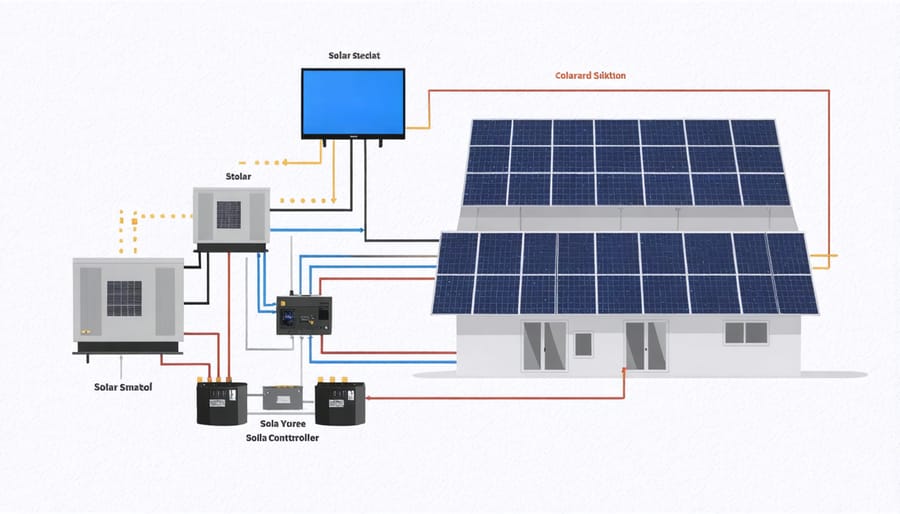
Smart Technology Integration
Smart technology is the brain behind modern solar microgrids, turning them from simple power systems into intelligent energy management solutions. At the heart of this integration is the energy management system (EMS), which constantly monitors and optimizes power flow between solar panels, batteries, and your home’s electrical devices.
These smart controls use sophisticated algorithms to predict energy needs based on your household’s usage patterns, weather forecasts, and time of day. For example, the system might automatically store excess solar energy during sunny afternoons to prepare for evening peak usage, or adjust battery charging rates based on upcoming weather conditions.
Mobile apps and user-friendly interfaces allow homeowners to monitor their energy production and consumption in real-time. You can track how much power your solar panels are generating, view battery storage levels, and even control smart appliances to optimize energy usage during peak production hours.
The system also makes automatic decisions about when to use stored energy versus grid power based on current electricity rates, helping you maximize savings. During power outages, smart controls seamlessly switch to backup power, ensuring your essential appliances keep running without interruption.
Advanced features include demand response capabilities, where your microgrid can participate in utility programs that reward you for reducing grid consumption during high-demand periods. Some systems even integrate with smart home devices, allowing for automated scheduling of high-energy activities like electric vehicle charging or pool pump operation when solar production is at its peak.
Real Benefits for Homeowners
Energy Independence and Reliability
Solar microgrids shine brightest during power outages and grid failures, offering homeowners a reliable backup power solution that conventional generators can’t match. When the main power grid goes down due to severe weather, equipment failures, or other emergencies, a solar microgrid seamlessly takes over, keeping your essential appliances and systems running without interruption.
Unlike traditional backup generators that require fuel and regular maintenance, solar microgrids work automatically by drawing power from your solar panels and battery storage system. During normal operations, your microgrid stores excess solar energy in batteries, creating a reliable power reserve for when you need it most. This stored energy can power your home for hours or even days, depending on your system’s capacity and energy usage.
The independence that solar microgrids provide goes beyond emergency backup power. By generating and storing your own clean energy, you’re less reliant on utility companies and their aging infrastructure. This means more stable electricity prices and fewer disruptions to your daily life. Many homeowners find peace of mind knowing they can keep their refrigerator running, maintain heating or cooling systems, and power medical devices even during extended outages.
Smart technology in modern microgrids also helps optimize power distribution. The system automatically prioritizes essential loads during outages, ensuring critical devices receive power first. This intelligent power management, combined with real-time monitoring capabilities, gives homeowners unprecedented control over their energy usage while maintaining reliable power when it matters most.
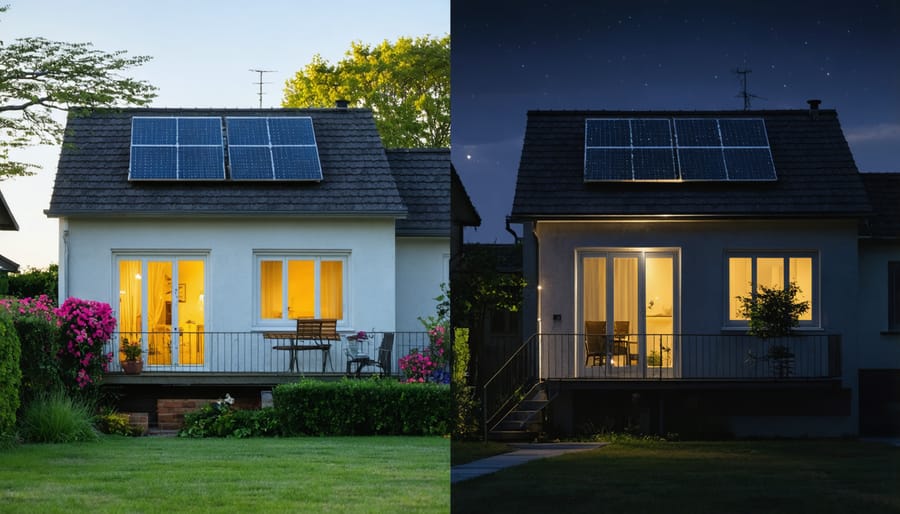
Cost Savings and Financial Returns
Solar microgrids offer substantial financial benefits that extend well beyond simple energy savings. Initial installation costs are typically offset within 5-8 years through reduced utility bills, making them an attractive long-term investment. The financial returns on solar investment can be particularly impressive when considering the complete microgrid system.
Homeowners can expect to save between 40-60% on their monthly energy costs immediately after installation. These savings compound over time, especially as utility rates continue to rise. Many households report annual savings of $1,200-$1,800, with higher amounts in regions with elevated electricity costs or abundant sunshine.
The potential for income generation adds another layer of financial benefit. Through net metering programs, excess energy produced by your microgrid can be sold back to the power company, creating a passive income stream. Some homeowners earn $300-$600 annually through energy credits alone.
Tax incentives and rebates significantly reduce initial costs. The federal solar tax credit currently allows homeowners to deduct 30% of their installation costs, while state and local incentives can provide additional savings of 10-20%. Many utility companies also offer performance-based incentives for microgrid systems.
The system’s value extends to property appreciation, with homes equipped with solar microgrids typically selling for 4-6% more than comparable properties. When combined with reduced maintenance costs and increased energy independence, the total financial benefit over a 25-year period can exceed $30,000 for an average household, making it a smart investment for long-term financial planning.
Making the Switch: Implementation Steps
Assessment and Planning
Before installing a solar microgrid, conducting a thorough assessment of your energy needs and planning the system requirements is essential. Start by reviewing your past 12 months of electricity bills to understand your typical energy consumption patterns. Pay special attention to seasonal variations and peak usage times.
Next, evaluate your property’s solar potential. Consider factors such as roof orientation, angle, and available space. South-facing roofs typically offer optimal sun exposure in the Northern Hemisphere. Also, check for any obstacles like tall trees or buildings that might cast shadows on your solar panels.
Calculate your desired energy independence level. Do you want to go completely off-grid, or maintain a grid connection as backup? This decision will influence the size of your battery storage system and the number of solar panels needed.
Document your critical power needs – essential appliances and systems that must remain operational during outages. This helps determine the minimum capacity requirements for your microgrid system.
Consider future needs as well. If you’re planning to add an electric vehicle or expand your home, factor these into your calculations. It’s often more cost-effective to build in extra capacity during initial installation than to upgrade later.
Finally, consult with certified solar installers who can provide detailed site assessments and system recommendations based on your specific requirements and local climate conditions.
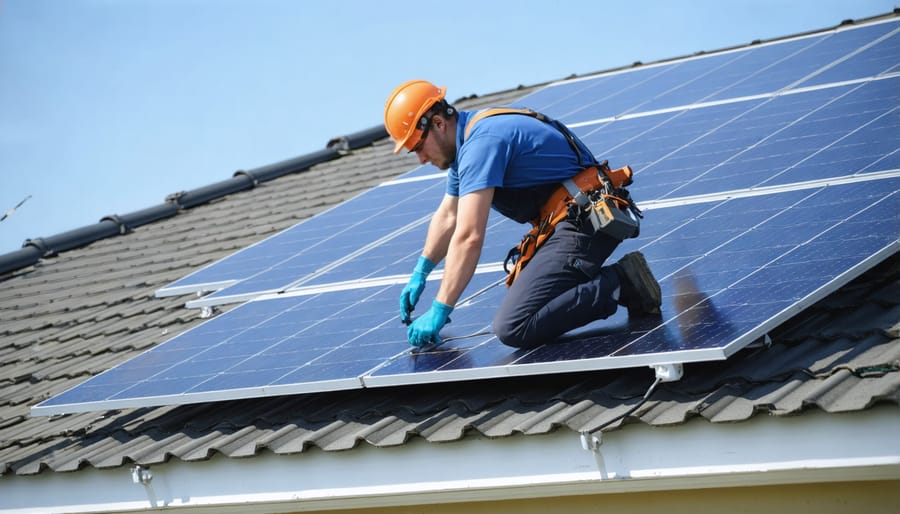
Installation and Integration
Installing a solar microgrid system typically takes between 3-7 days, depending on your home’s size and system complexity. The process begins with a thorough site assessment, where installers evaluate your roof’s condition, sun exposure, and existing electrical infrastructure.
Professional installers will mount solar panels on your roof or ground-mounted arrays, ensuring proper orientation for maximum sun exposure. They’ll then install the battery storage system, usually in your garage or utility room, along with the necessary inverters to convert solar energy into usable electricity.
The integration phase involves connecting your microgrid to your home’s electrical panel and, if desired, to the main power grid. Smart meters and control systems are installed to manage power flow between your solar panels, batteries, and appliances. These controllers automatically switch between solar, battery, and grid power to optimize energy usage.
Most modern solar microgrids are designed to work seamlessly with existing home automation systems. They can be monitored and controlled through smartphone apps, allowing you to track energy production, consumption, and savings in real-time.
The final step involves inspection and certification by local authorities to ensure compliance with building codes and safety standards. Many installers also provide training on system operation and maintenance, ensuring you can maximize the benefits of your new solar microgrid from day one.
Future-Proofing Your Home Energy System
When investing in a solar microgrid system, it’s essential to consider how your energy needs might evolve over time. Modern microgrid systems are designed with scalability in mind, making it easy to expand your system as your energy requirements grow. Whether you’re planning to add an electric vehicle, increase your living space, or incorporate new smart home technologies, your microgrid can adapt to meet these changing demands.
Keep an eye on the latest solar technology trends to maximize your system’s potential. Battery technology continues to improve, with newer models offering greater storage capacity and longer lifespans. Smart inverters are becoming more sophisticated, enabling better power management and grid integration. These advancements mean your initial investment can become even more valuable over time.
To future-proof your system, consider installing additional conduit and mounting hardware during the initial setup. This foresight can significantly reduce the cost and complexity of future expansions. Many homeowners also opt for slightly larger inverters than currently needed, allowing for easy panel additions later.
Integration capabilities are another crucial aspect of future-proofing. Modern microgrids can seamlessly connect with home automation systems, energy management platforms, and smart appliances. This connectivity ensures your system remains compatible with emerging technologies and can take advantage of new energy-saving features as they become available.
Don’t forget about software updates and monitoring capabilities. Today’s systems often include remote monitoring and over-the-air updates, ensuring your microgrid stays current with the latest efficiency improvements and security features. Some manufacturers even offer predictive maintenance capabilities, helping you anticipate and prevent potential issues before they affect your system’s performance.
By choosing a flexible, upgradeable system and staying informed about technological developments, you can ensure your home energy system remains efficient and effective for years to come.
Solar microgrids represent a powerful solution for homeowners looking to take control of their energy future. By combining solar panels, energy storage, and smart management systems, these installations offer unprecedented independence and reliability. The benefits are clear: reduced electricity bills, protection against power outages, and a smaller carbon footprint.
For environmentally conscious homeowners, solar microgrids provide a practical way to contribute to a sustainable future while enjoying immediate personal benefits. The ability to generate, store, and manage your own power puts you in control of your energy destiny, whether you’re connected to the main grid or operating independently.
The time to consider a solar microgrid is now. With falling technology costs, improved battery systems, and numerous incentives available, the financial barriers to entry are lower than ever. Many homeowners find that their systems pay for themselves through energy savings within 5-10 years, while providing decades of reliable power.
Take the first step by consulting with qualified solar installers in your area. They can assess your home’s potential, explain available incentives, and design a system that meets your specific needs. Whether your goal is energy independence, environmental stewardship, or simply reducing your monthly bills, a solar microgrid can help you achieve it.
Join the growing community of homeowners who are embracing this technology and leading the charge toward a more sustainable and resilient energy future.

